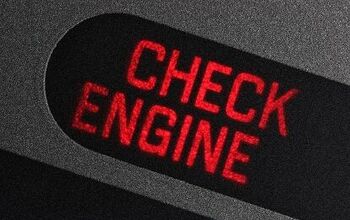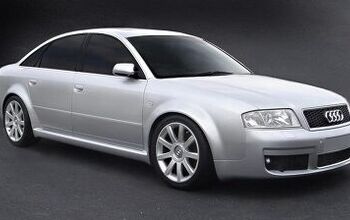Piston Slap: Deep-Sixing Unknown Friction Materials?

TTAC Commentator tonycd writes:
Hi, Sajeev! I’m a long-ago occasional TTAC contributor, occasional B&B pontificator, and longtime admirer of your column, with a question of my own.
My brother just picked up a very used ’09 Mazda6 Grand Touring V6. Lotsa horses, in need of brake service to rein them in. He’s hearing and feeling a pulsing through his brake pedal, sort of a low rhythmic moaning tone. It could be wear indicators, but more likely it’s a warped front rotor. Either way, he’s pretty confident he’s going to have to replace all the friction materials, including the rotors.
Which leads to my question: What’s a not-crappy brand of brake parts? He doesn’t want to expend all the labor on replacement, only to have them immediately warp again the first time he heats them up (which he will – especially with 274 ponies, he’s an, er, enthusiastic driver). Everybody knows Brembo, but who else sells quality?
Sajeev answers:
Doing the brakes on a used vehicle of unknown history is always a smart idea. Which is a rather huge understatement!
Several vendors make consistently good brake parts, but I doubt their superiority on a street-driven vehicle. I’ve used the cheapest rotors possible (that still met OEM design standards) with decent quality semi-metallic, ceramic or carbon-metallic pads and never had a problem.
For me, it’s more about the pad than the rotor. Even on track-focused cars, there’s a lot to like about cheaper rotors when it’s your wallet on the line.
So I doubt your brother’s recent purchase of a “very used” 10-year-old Mazda needs nothing more than new rotors made to OEM standards, ceramic or carbon metallic pads, and the proper break-in procedure applied.
Unless he does track day events every month and drives on the street like a maniac (and I mean go-to-jail maniac), he won’t have an issue. I saw no concerns about rotor thickness/warping for GEN II Mazda 6s on google: anything I found could easily be a poor choice in brake pad. This is “just” a 3,600 lb car: while Brembo has a well-deserved reputation for excellence, nobody’s perfect. Stoptech makes people happy (I’ve used Centric, the parent company’s cheap stuff, with success) and the Internet’s also kind to Powerstop.
But can you trust anyone’s opinion on aftermarket upgrades? Hell to the no: everyone’s gonna feel an improvement going from used pads/rotors to brand new ones. Even if they honestly realize there’s no improvement on public roads, will anyone swallow their pride and say “I made a mistake buying this stuff when the factory-designed bits were just as good?”
Positive internet feedback is probably the most misleading thing in our industry.
My advice: get Raybestos brake rotors and ceramic brake pads of your choice. I’d personally go for cheaper, off brand rotors, but I’d hate to be wrong with someone else’s whip.
Send your queries to sajeev@thetruthaboutcars.com. Spare no details and ask for a speedy resolution if you’re in a hurry…but be realistic, and use your make/model specific forums instead of TTAC for more timely advice.

More by Sajeev Mehta
Latest Car Reviews
Read moreLatest Product Reviews
Read moreRecent Comments
- UnoGeeks Great information. Unogeeks is the top SAP ABAP Training Institute, which provides the best SAP ABAP Training
- ToolGuy This thing here is interesting.For example, I can select "Historical" and "EV stock" and "Cars" and "USA" and see how many BEVs and PHEVs were on U.S. roads from 2010 to 2023."EV stock share" is also interesting. Or perhaps you prefer "EV sales share".If you are in the U.S., whatever you do, do not select "World" in the 'Region' dropdown. It might blow your small insular mind. 😉
- ToolGuy This podcast was pretty interesting. I listened to it this morning, and now I am commenting. Listened to the podcast, now commenting on the podcast. See how this works? LOL.
- VoGhost If you want this to succeed, enlarge the battery and make the vehicle in Spartanburg so you buyers get the $7,500 discount.
- Jeff Look at the the 65 and 66 Pontiacs some of the most beautiful and well made Pontiacs. 66 Olds Toronado and 67 Cadillac Eldorado were beautiful as well. Mercury had some really nice looking cars during the 60s as well. The 69 thru 72 Grand Prix were nice along with the first generation of Monte Carlo 70 thru 72. Midsize GM cars were nice as well.The 69s were still good but the cheapening started in 68. Even the 70s GMs were good but fit and finish took a dive especially the interiors with more plastics and more shared interiors.


































Comments
Join the conversation
Thank you, Sajeev. My brother is most appreciative of the advice. And he gives a shout-out to Terry for the brake fluid flush advice as well.
It's important to consider how brakes function. They slow/stop a vehicle by changing the energy of the vehicle moving into heat. The mass of the brake(s) needs to be sufficient to absorb and store that heat, in the most energy intensive brake use, and not get so hot that something in the system fails. After brake use the heat can be transferred to the air. If rotors get to hot they will warp, crack, or even fall apart. Brake fluid can boil and friction materials will have much less friction when overheated (brake fade). Manufacturers are obviously trying to minimize the cost of production. A pound of cast iron not put into making the rotors, on one vehicle, will save a lot of $$$ in building 100,000 vehicles. If the rotors are too light they cannot hold the heat, until it can transfer to the air, without some sort of failure. There have been a number of models over the decades with this problem. I knew a guy that worked at a Ford dealer in the 1990s. He told me many of the 1/2 and 3/4 ton pickups were returning for warranty with pulsating brakes. The mass of the rotors had been reduced from previous model years. He said the only thing they could do was install new rotors and pads, true the rotors with an on the vehicle lathe and cross their fingers. Some trucks came back three or more times during warranty.